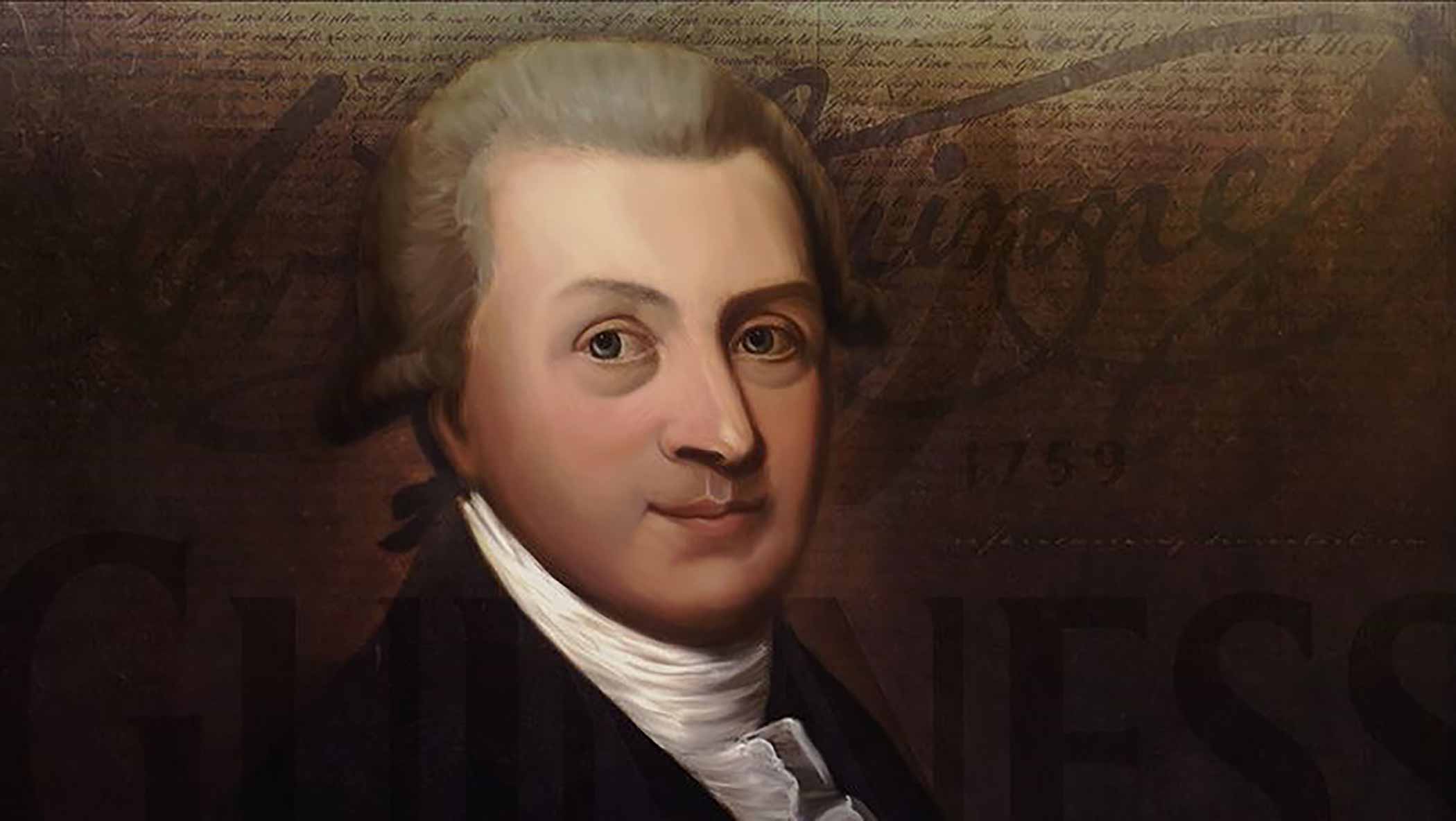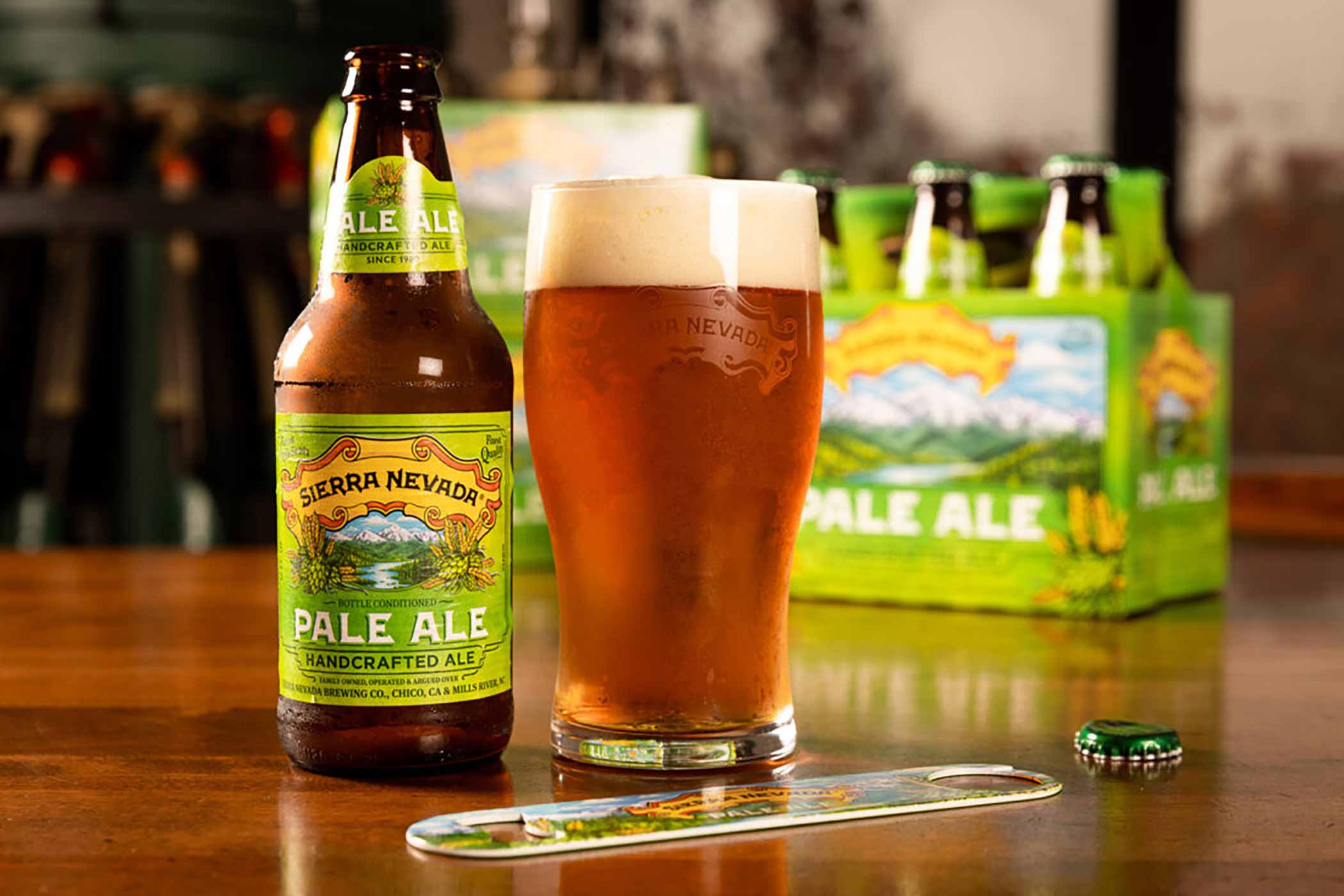Shop
The Cult of Guinness: The Crazy History of One of the World’s Most Iconic Breweries
Over two hundred and sixty years. Countless stories. Many iconic beers. And the world's biggest stout brewery.
Guinness is an amazing brewery, but you should also check out some of these incredible craft breweries around Dublin!
At five in the morning, Chris Hayden got off the plane in Dublin, Ireland. He had flown across the Atlantic Ocean for only one thing: to drink a pint of Guinness at the original St. James’s Gate location. Hayden couldn’t even check into his hotel yet. But he didn’t care. He stored his bags, walked over to the Guinness Storehouse at St. James’s Gate, and waited outside for the brewery to open. Once inside, he got a pint from the source up in The Gravity Bar, sat down with a 360-degree view of the city, and took that first sip. “It hit me,” says Hayden, an ardent Guinness fan with over 17,000 check-ins of Guinness Draught Stout on Untappd. “Oh my god. This is it!”
What is it about that pint of dark, creamy liquid that people love so much?
What about Guinness has captured the hearts and minds of fans in countless countries?
And has trickled it’s way into so many different cultures.
Hayden’s love affair with Guinness actually started with a book: Tom Clancy’s “Rainbow Six.” “After they finished a mission, they talked about going back to the base and having some pints of Guinness,” says Hayden. “I decided that if I ever drank beer, that’s the beer I was going to drink.” A couple years later, Hayden drank his first Guinness. He’s never looked back.
In fact, he only drinks beers brewed by Guinness now. And he has visited Dublin close to twenty times, at least once a year around his birthday (minus the past couple years because of the global pandemic).
Some fans travel from around the world to try Guinness at the source. Others simply love to drink it at their local bar. While even more love Guinness so much that they have their own keg of it in their basement at home (we’re looking at you, Chris!).
Regardless of how people express their love for this beer, Guinness has become one of the most iconic beer brands on Earth.
Today, Guinness stands as the largest brewer of stout in the world.
But that wasn’t always the case.
Dig back into the archives and you’ll find a history as rich as that creamy, smooth, Irish dry stout in front of you. And as full of stories as that longtime Guinness drinker sitting next to you in the pub.
We guarantee that by the time you finish reading this, you’ll have learned something new about one of the most revered and recognizable pints in the history of beer.
There May Not Have Been a Guinness…Without an Archbishop
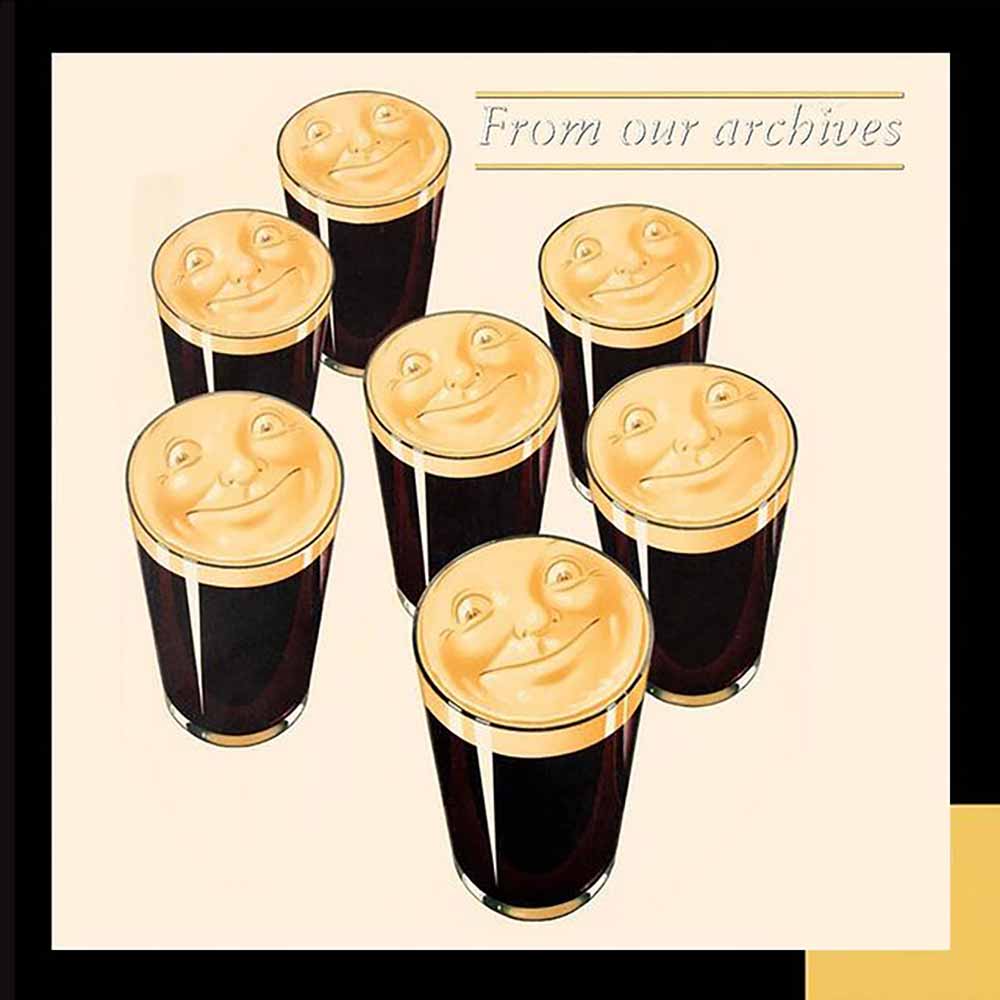
Photography courtesy of Guinness
Founded by Arthur Guinness in 1759, Guinness has a storied past. And it starts with the Guinness family.
Born in 1725 in Celbridge, Ireland, Arthur grew up in a family that served as groundskeepers on lands held by a very high-ranking official in the Protestant Church, Arthur Price, the Archbishop of Cashel.
Although not a wealthy family, the Guinnesses thrived. Even before the brewery, the family owned a very successful flour mill. And many of the family members became politicians or served in parliament in England (at the time, Ireland was still a part of the British Empire).
But for the brewery itself, we have Archbishop Price to thank. Albeit, indirectly.
As a reward for faithfully serving the archbishop, the Guinness family received a significant amount of money when he passed away.
“That money allowed Arthur to open the brewery in Dublin,” says Ryan Wagner, Interim Marketing Manager at Guinness Open Gate Brewery, the first brick-and-mortar Guinness taproom in the United States.
Arthur used that money to purchase a 9,000-year lease on an old run-down brewery. The place many loyal Guinness fans pilgrimage to today—St. James’s Gate Brewery.
World’s Largest Brewery: Brewing Guinness at St. James’s Gate in Dublin
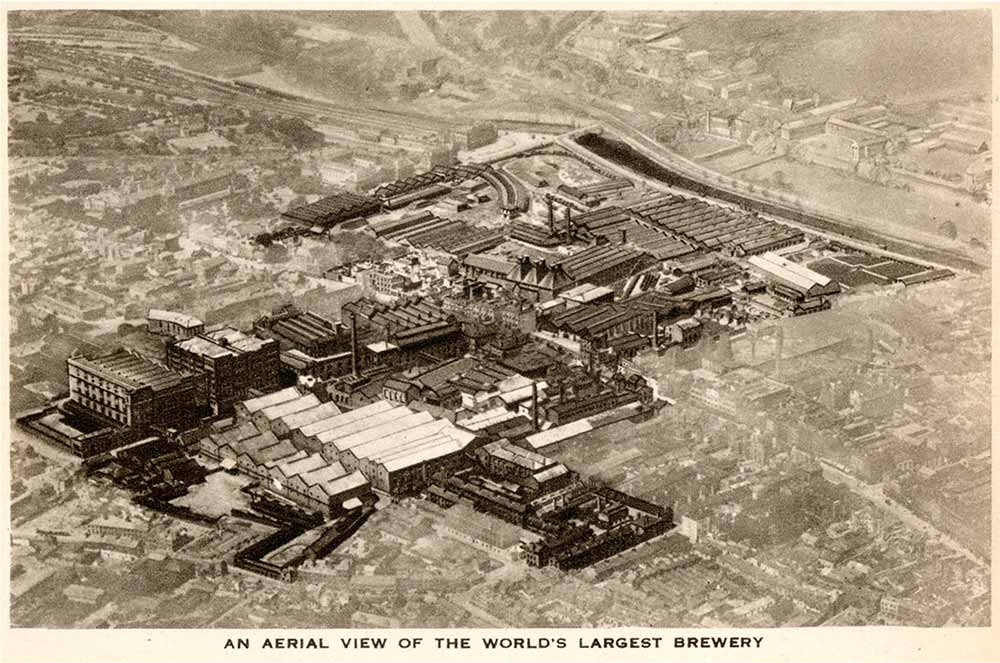
Photography courtesy of Guinness
Named after both a neighborhood in Dublin and an actual Medieval gate leading into the city, St. James’s Gate was a dilapidated brewery when Arthur signed the lease. For an annual rent of £45, Arthur bought a four-acre property with four buildings on site—a living quarters, a horse stable, a malt house, and a brew house.
“From those meager beginnings in a rundown property, Guinness ended up becoming one of the largest breweries in the world at one point,” says Wagner.
In 1838, St. James’s Gate Brewery became the largest brewery in Ireland, and by 1886 it had achieved the title of largest brewery in the world. Sixty-four acres at its largest, St. James’s Gate had everything from one the world’s biggest cooperages to ports that accessed the river where boats whisked away beer from the brewery.
Still operational today, St. James’s Gate is now officially recognized as the world’s biggest brewer of stout.
Afterall, it’s stout that truly put Guinness on the proverbial and physical map.
But, it wasn’t the beer Arthur Guinness first brewed.
Shockingly, Guinness Didn’t Always Make Stouts
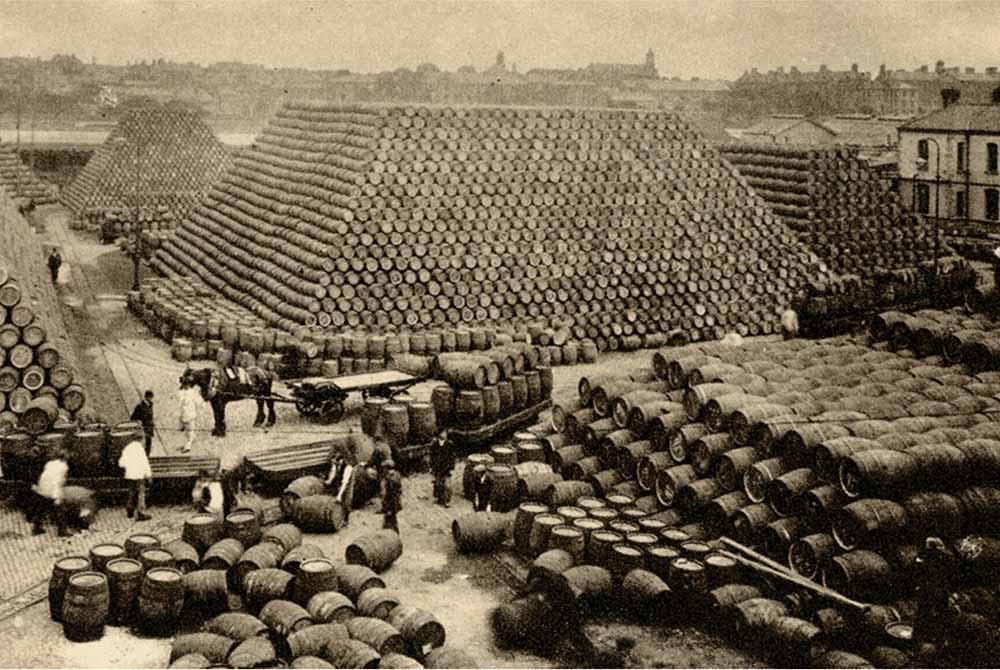
Photography courtesy of Guinness
In all truthfulness, Arthur started off brewing pale ales and amber ales. “That was the style of the day in that part of the world,” says Wagner. And Guinness did build up some local cred on them.
It wasn’t until 1798 that dark beer entered the conversation. During the late eighteenth century, brewers of the region discovered something. If you took beer with darker malt, which at that point had been considered a lower-quality ingredient that gave beer a harsh quality, and allowed it to mature in large wooden vats for twelve to eighteen months, you ended up with a pretty damn fine beer.
That same year, Guinness constructed Vat House Number One. “That was a big step forward because it was those vat houses that allowed Guinness to start producing the darker beers that we would become synonymous for later on,” says Wagner.
Local folks loved the beer enough that by 1799 Arthur Guinness II, the son of Arthur Guinness, stopped brewing ales altogether to hone in on his stout recipe.
In 1801, Arthur Guinness II introduced West Indies Porter—later renamed Foreign Extra Stout—the longest continually brewed recipe in the history of Guinness.
Two decades later, Guinness launched Guinness Extra Stout, a beer that has been a huge part of the brewery’s history.
These two beers dominated Guinness’ world for a long time—all through the nineteenth century, in fact.
Which is funny, considering that in the United States when someone orders a Guinness they aren’t typically asking for either of these two beers.
They’re ordering a Guinness Draught Stout.
In the United States, Guinness’ Most Famous Beer Wasn’t Even Released Until 1965
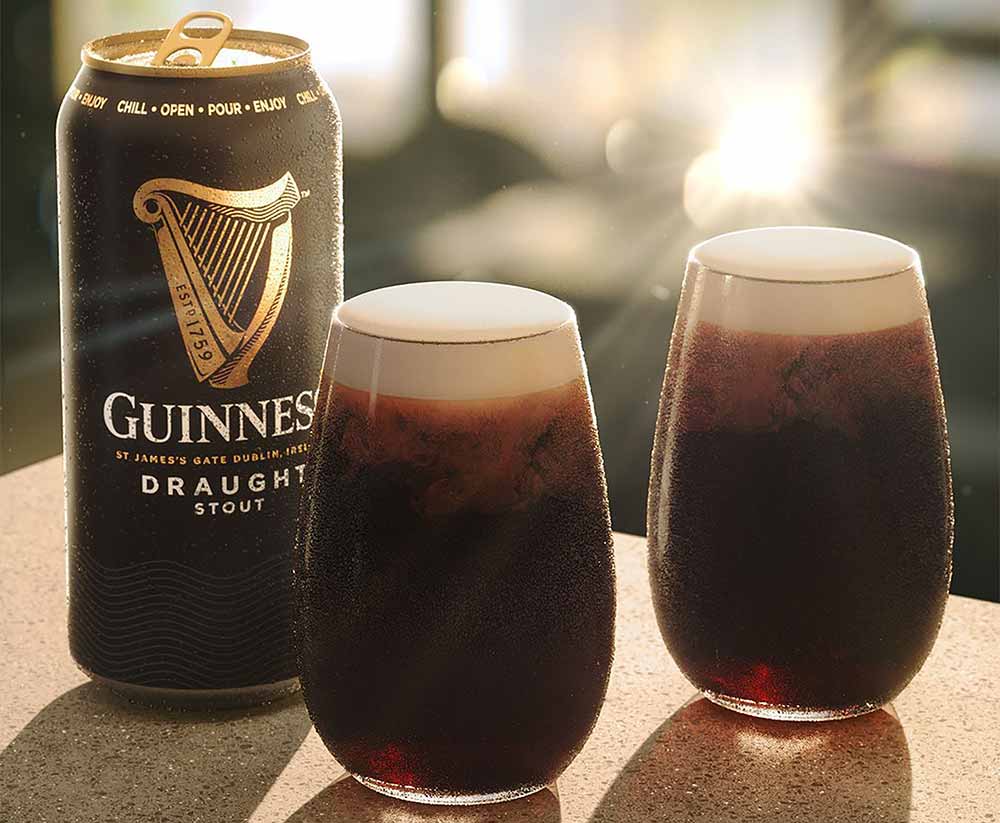
Photography courtesy of Guinness
Hold up, hold up, hold up. What are you talking about? You’re telling me that for two hundred-plus years, Guinness built up a reputation as the biggest stout brewery in the world without ever brewing a single drop of Guinness Draught Stout?
Yup.
“[When people think about Guinness, they] think about Guinness Draught Stout and with good reason,” says Wagner. “It’s a very famous, iconic beer that everyone knows and loves, but even at the brewery in Baltimore most people, when they come up to the bar to order it, they ask for ‘the original,’ and [Guinness Draught Stout] is not even close to the true original.”
Okay, okay, okay, but I’m confused. Can we go back? So Foreign Extra Stout was the first dark beer from Guinness to receive a wider, global release?
Yup.
But what is Foreign Extra Stout then?
So glad you asked.
Foreign Extra Stout: A Worldwide Phenomena
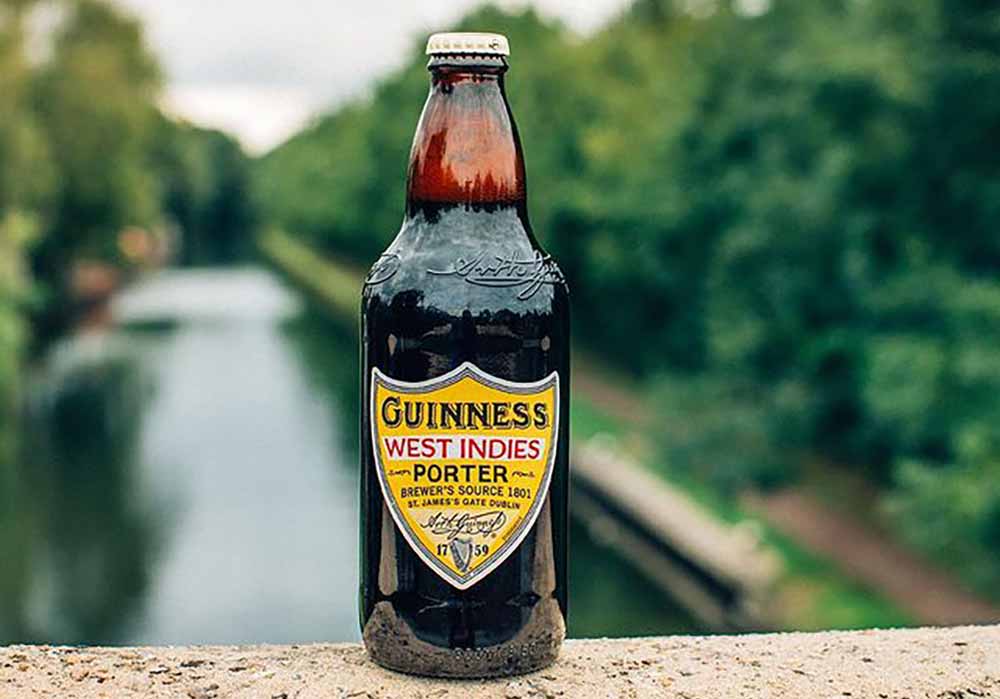
Photography courtesy of Guinness
Originally named West Indies Porter, but today called Foreign Extra Stout, this beer was first brewed in 1801. It’s the longest continually brewed beer at Guinness. A full-flavored stout brewed with pale malt, flaked barley, and roasted barley*, Foreign Extra Stout clocks in at 7.5% ABV. Although the beer drinks slightly bitter from the hops, Foreign Extra Stout finishes refreshingly sweet and crisp from the roasted barley.
See back in the early 1800s, Guinness had already started to expand worldwide. For that reason, Arthur Guinness II included more hops in the recipe to make sure the beer could survive its journey across the globe.
That’s important because, if you look across Guinness’ world, they are currently served in almost 180 countries on Earth. “Guinness is very much a global brewery and a global brand,” says Wagner. “In the overwhelming majority of places, if you order a Guinness and you just say Guinness, you will get a Foreign Extra Stout.”
Places like Nigeria, where the number of Guinness drinkers is higher than all of Ireland, according to the Smithsonian Magazine.
Or in Malaysia, where if you order a ‘Black Dog,’ you’ll be handed a bottle of Foreign Extra Stout.
In fact, according to Wagner, Foreign Extra Stout is the number one selling beer in Guinness’ portfolio.
*Editor’s Note: Ingredients in Foreign Extra Stout may vary slightly in variants brewed under license in international countries outside of Ireland.
Nigeria Has More Guinness Drinkers than Ireland…Seriously

Photography courtesy of Guinness
We wrote that already, but it bears repeating. Why? Because as Wagner mentioned, Guinness is a global brand.
Nigeria is the brewery’s second largest sales market in the entire world, and Guinness has fourteen breweries on the continent of Africa alone.
“If you go to Nigeria, Ghana, Cameroon, and ask people about Guinness and mention Ireland, I think the response you’ll get is: They make it there too,” says Wagner. “For so many cultures, especially in Africa, Guinness has been at home in those locations for decades.” According to Wagner, Guinness shipped beer to Africa before ever sending kegs to the U.S.
“There is an incredible sense of ownership people have around the world for Guinness,” says Wagner. “It is always an Irish beer and it will always be an Irish beer, but whether you’re in Africa, Malaysia, or the Caribbean, there is a sense of ownership and pride when people talk about Guinness.”
And not just Foreign Extra Stout.
Guinness Extra Stout is also very popular all around the world.
Extra Stout: Extra Popular
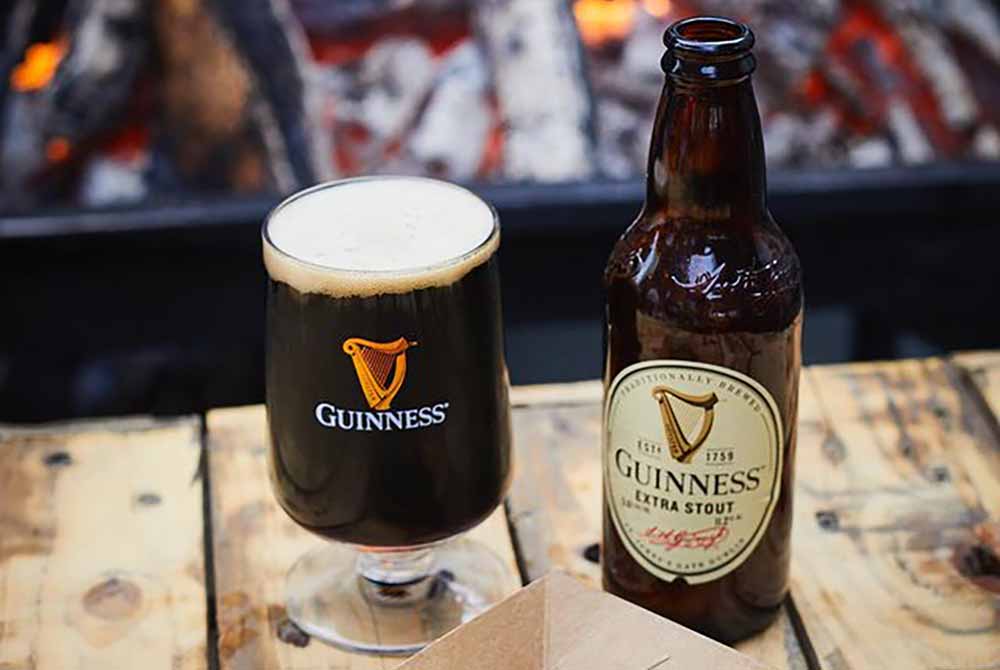
Photography courtesy of Guinness
Extra Stout has its own place in the history of Guinness. And again it’s Arthur Guinness II who pioneered this recipe, releasing the beer in 1821.
Sharper and crisper than Guinness Draught and Foreign Extra Stout, this beer falls into the classic Irish dry stout category.
When it comes to Irish dry stouts, simply remember “two big words: roasted barley,” says Wagner. “That to me is quintessentially what separates an Irish dry stout from any other stout made in the world.”
The use of unmalted roasted barley adds more of a roast character, and it also helps give the beer its iconic color.
“Most people, when they hear about Guinness it’s as the pint of black stuff,” says Hayden. “But in actuality, it’s a dark ruby red.”
All thanks to the barley, which Guinness roasts on site at St. James’s Gate. Four roasters run twenty-four hours a day, seven days a week, every day of the year, including Christmas.
“If you’ve ever visited St. James’s Gate, you know when you’re getting close because you can smell the roast in the air,” says Wagner.
Overwhelmingly within the brewery, “Extra Stout is [considered] the quintessential stout,” says Wagner. “If you talk to most people who work at Guinness, the beer we keep in our fridge most often is Extra Stout.”
But by far and away when it comes to Guinness in the United States, it’s the creamy, dreamy Guinness Draught Stout that reigns supreme.
The Origin of Guinness Draught Stout: The Two-Part Pour
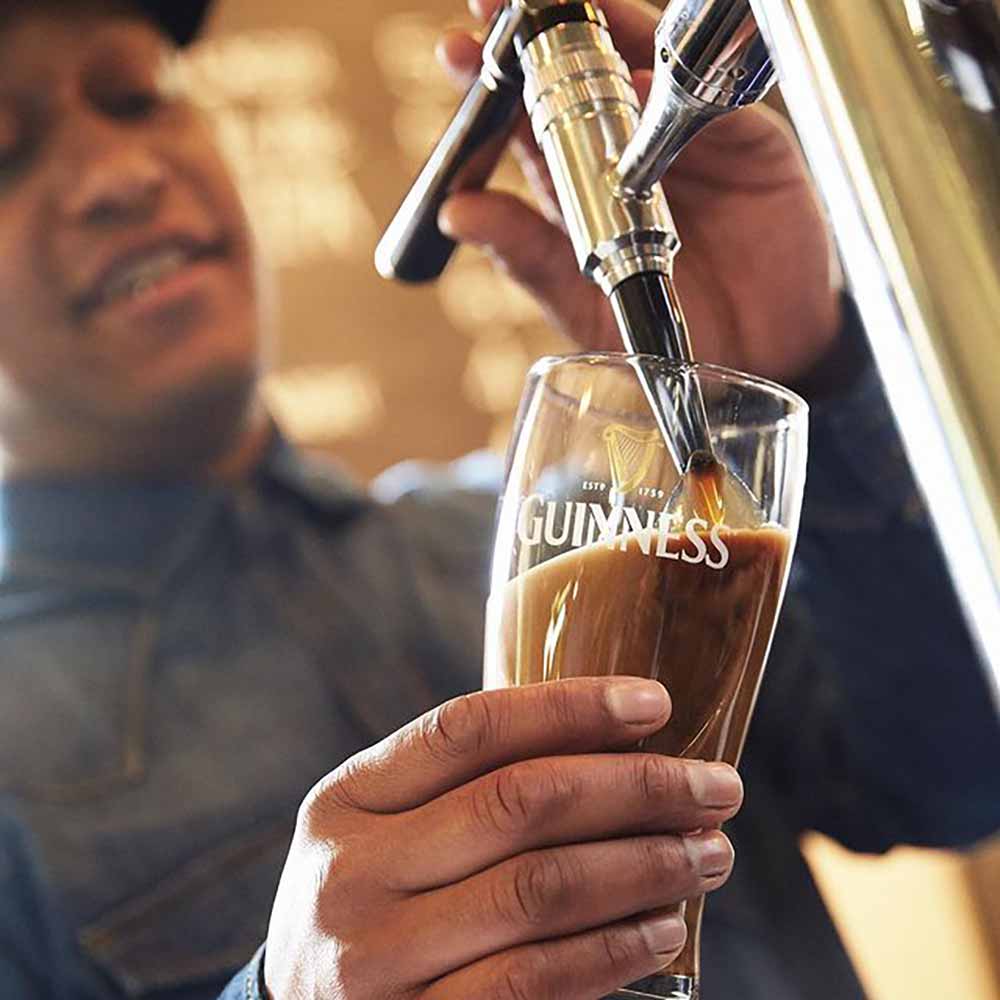
Photography courtesy of Guinness
In 1959, Guinness celebrated its bicentennial, releasing Guinness Draught Stout for the first time. Six years later the beer first arrived in the United States.
But we can trace the roots of Guinness Draught Stout to much earlier.
Pun very intended when we say the origin of Guinness Draught Stout is actually two-fold. And it started with the two-part pour.
For years and years, bars and pubs served Guinness beer in one of two ways. Either the brewery sent beer to the bars and they would bottle it themselves, or the brewery would send each pub two casks of Guinness beer.
One a fresh lively barrel right from the brewery with plenty of carbonation and the other a bit more aged. Called a flat or stale cask, this beer had most of the flavors and aroma, but none of the carbonation.
The publican or bartender had to blend those two together on their own to make the perfect beer. This two-part pour became an integral part of Guinness’ history. One that follows the beer still to this day.
Although now, we can create that two-part pour from only one keg. How is that possible? Well, that’s the exact question Guinness had to ask itself.
See, by the mid-twentieth century brewers began using single stainless steel kegs to store beer instead of a two-barrel system.
Guinness needed a solution.
So in 1951 they hired Michael Ash, a scientist and mathematician. “Everyone is pouring out of one steel keg now, we know this is where the industry is going, so we need to figure out how to recreate what we’ve already been doing, but out of one keg,” says Wagner.
It took five years and plenty of money, but the breakthrough finally occurred.
And it’s called nitrogen.
The Origin of Guinness Draught Stout: The Miracle of Nitrogen
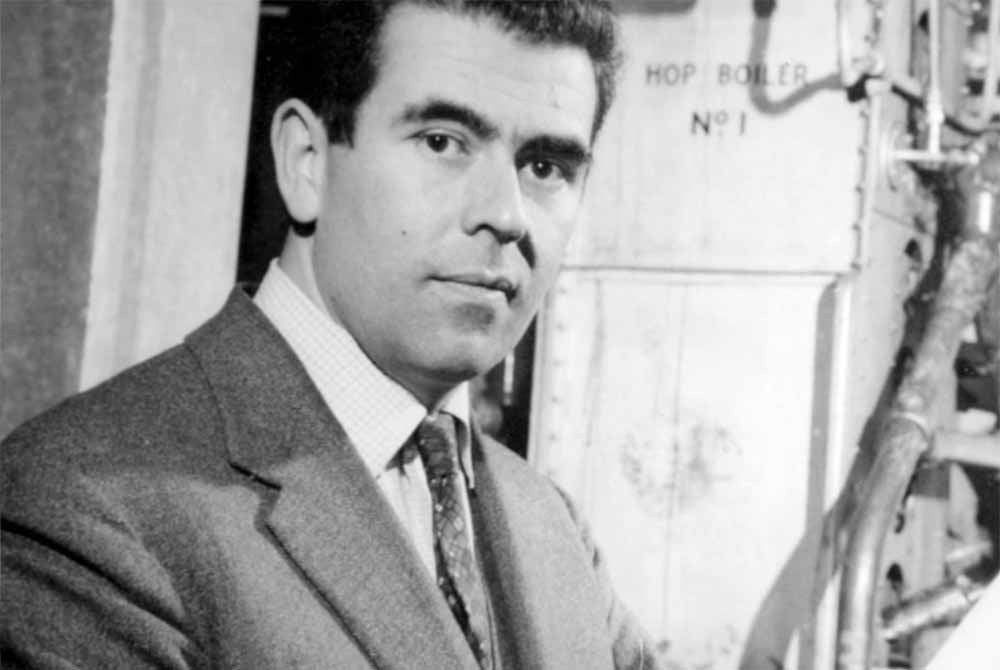
Photography courtesy of Guinness
To recreate that two-part pour in one vessel, Michael Ash worked with Guinness to design a special keg. The Ash Can (aptly named after the scientist and mathematician) actually included a two-part keg, with one chamber full of beer and the other full of mixed gas under pressure (twenty-five percent CO2 and seventy-five percent nitrogen). The two combined during the serve to create a nitrogenated pour directly from the tap. One that poured very creamy and delicious.
Normally, brewers carbonate beer with carbon dioxide (CO2). The bubbles for this gas are large and attract other CO2 bubbles. They’re agitated very easily and can break through the surface tension of whatever liquid they’re in, “which is why if you shake a bottle of soda and open it…it’s going everywhere,” says Wagner.
Think of nitrogen almost as the opposite. This gas has smaller bubbles that repel each other. “They don’t have the same energy and excitement as CO2 to burst through,” says Wagner. Meaning your beer develops a very luxurious texture in the glass.
A pretty genius breakthrough, the technology has evolved today.
Guinness even figured out a way to create that same nitrogenated effect in its cans.
Apparently the Widget Is More Important Than the Internet
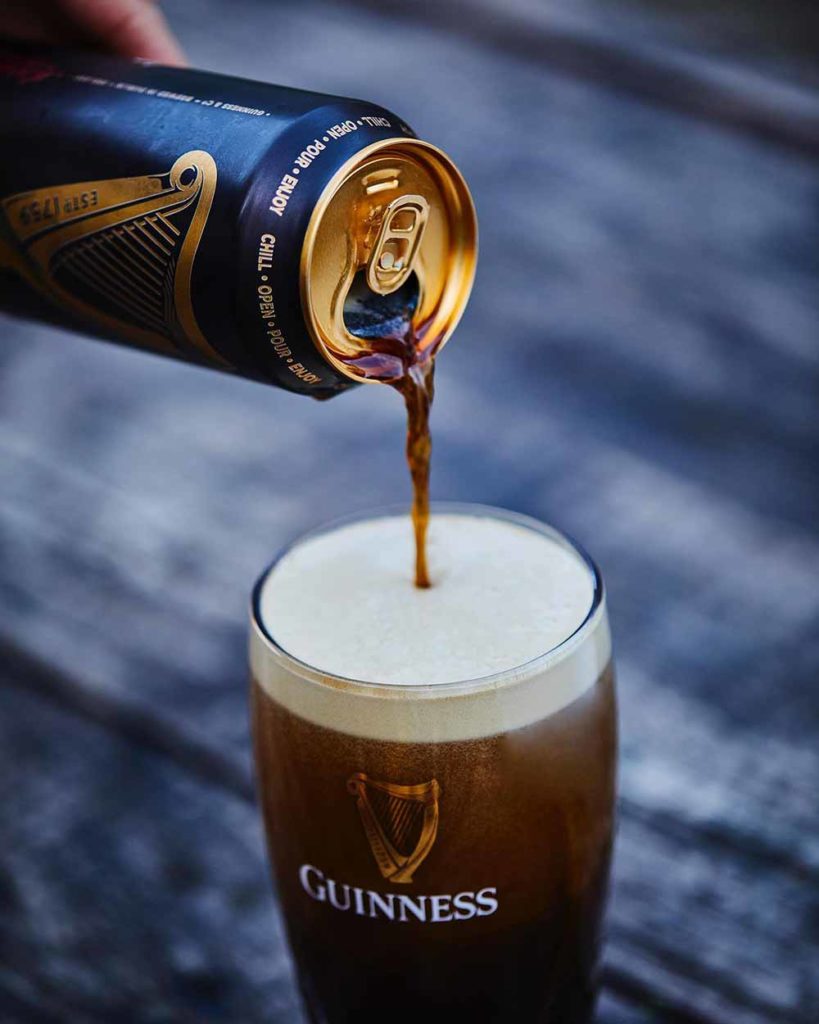
Photography courtesy of Guinness
After revolutionizing the two-part pour, Guinness asked: How can we recreate Guinness Draught Stout to drink at home? Debuting in 1989, the widget was Guinness’ ingenious answer.
What is a widget? Well, it’s that tiny ping-pong shaped ball rattling around in your Guinness can.
And yes, it is one hundred percent supposed to be there.
Winning the Queens Prize in the U.K. for innovation the year it came out, the widget “is a remarkable bit of invention because of its simplicity,” says Wagner.
Many people believe that the ball inside of the can is filled with nitrogen and when you crack a can of Guinness Draught Stout the widget releases this gas.
Spoiler alert: that’s not how it works. It’s actually much simpler.
Instead an empty widget goes into an empty can. The beer, which already has the right gasses in it, goes into that can, filling up the widget and the can simultaneously. Guinness then adds the additional pressure they need and caps the can.
“When you open the can at home, the balancing of gasses that happens from the outside atmosphere and what’s going on inside the can forces the beer that’s inside of the widget out,” says Wagner. “When it hits tiny pinholes [in the widget] that creates the surge and settle.”
This also means that when you open a can of Guinness Draught Stout at home, you have to pour all of it out immediately. “Once you lose that initial rush from the can being opened, you can’t recreate it,” says Wagner.
It’s an ingeniously simple innovation. One that folks in Ireland have recognized time and again. In fact, in the early aughts, an Irish magazine published a survey for readers asking them questions about the previous hundred years, including: What was the most important invention of the twentieth century?
The widget won.
And the answer that received the second highest number of votes?
The internet.
“If you have any question about how folks feel about getting their Guinness Draught Stout at home, that answers that question,” says Wagner.
Still, for those not in the know, the widget has caused a bit of controversy.
“I’m not making this up, but we still get people on a weekly basis who will send us emails or call us really fired up saying they can’t finish their can of beer because there’s something in there,” says Wagner.
It’s just another classic story that has contributed to the cult of Guinness.
So Why Do People Love Guinness Draught Stout?
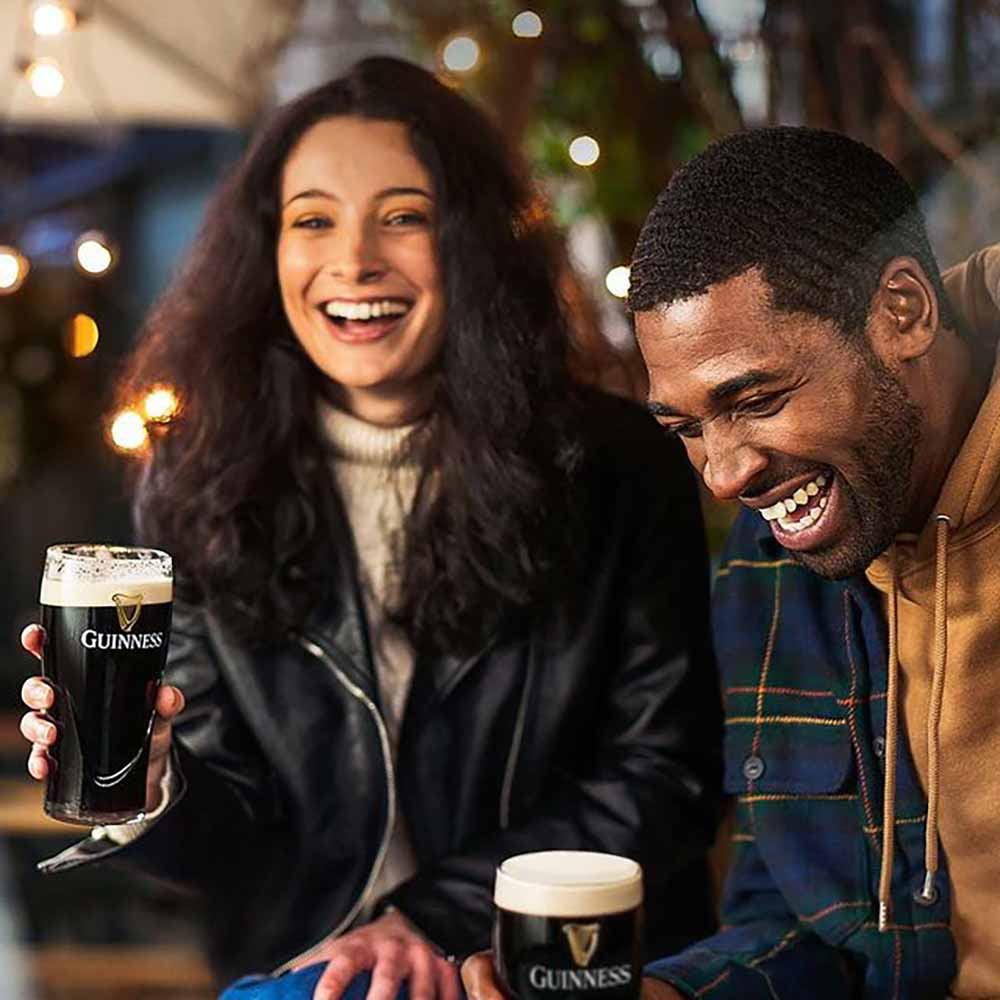
Photography courtesy of Guinness
Several things combined at just the right time to make Guinness Draught Stout gain a cult-like following.
First and foremost, that two-part ritual is iconically and uniquely Guinness. Plus, the beer just looks so much different than most other beers. “If you’re sitting at a bar and someone has a pint of Guinness Draught Stout in front of them, you normally know it like that,” says Wagner, as he snaps his fingers.
And for that reason no one has really been able to recreate it.
“There are lots of people out there that have made pale ales similar to Sierra Nevada Pale Ale and goodness knows a lot of hazy IPAs,” says Wagner. “Nitrogenated dry stout…there is really just Guinness. Even now seventy years later, Guinness Draught Stout in many ways stands alone.”
It’s a unique beer. “Once you sip through the foam and get the beer, you get roastiness and it’s just a smooth taste, which catches some people off guard,” says Hayden.
Lastly, when it first came to the U.S. in 1965, an incredibly big and passionate Irish American community immediately took to it.
“It shot off like a rocket,” says Wagner. “It was the perfect recipe of what the perception of Guinness is in the United States…because of the melting pot nature of the country…the unique technology in brewing and pouring it, and [the culture of] sharing it at a bar or a pub.”
Speaking of sharing it at pubs…
Is Guinness Draught Stout Really Better in Ireland?
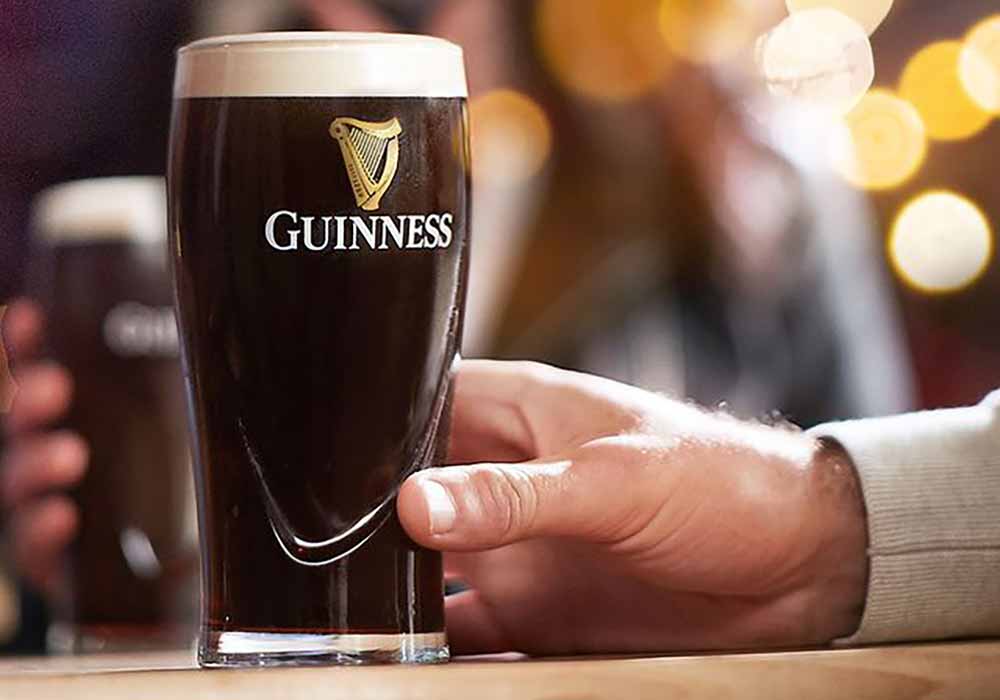
Photography courtesy of Guinness
For years Guinness fans have spread the sentiment that the best pint of Guinness you can possibly taste in the world comes straight from the source at St. James’s Gate in Dublin.
But is a pint of Guinness really superior in Ireland?
Well, the scientists from the Institute of Food Technologists might say so. They conducted a series of Guinness taste tests in thirty-three cities and fourteen countries, including Ireland. On average the Guinness from Ireland earned a score of seventy-four out of 100, while in other countries the pints averaged a score of fifty-seven.
But if you talk to the folks at Guinness, like Wagner, this question brings up a point of contention.
“Especially in America, people have been told by Guinness adorers everywhere that no matter how good this pint is, you have to go to Dublin because when you go to Dublin the pints are amazing,” says Wagner. “You get on an airplane and fly five to six hours on a red eye, get up at 11 o’clock in the morning desperate to try the beer, go to a pub that has been there for 800 years with a bartender that has been bartending since they opened 800 years ago and a guy playing Irish music; a sheep walks by, you get your pint, you try it, and oh my god, this is the best Guinness Draught Stout you’ve ever had in your life.”
Wagner doesn’t have a problem with that at all, but he wants to make it clear that there are incredible pubs all across the U.S. and the world that pour wonderful pints of Guinness Draught Stout.
For example, at the Guinness Open Gate Brewery that opened in Baltimore in 2018, “the beer is as fresh as you’re going to get,” says Wagner, who notes that the lines are cleaned just like they do in Dublin and the pour is conducted exactly the way they do in Dublin. “I can tell you that there is no difference whatsoever in a pint of Guinness Draught Stout at Open Gate Brewery as there is at any pub in Dublin,” says Wagner. “But we still have people say every day, oh man that’s really good, but you know what? It’s just not as good as it is in Dublin. I think we’re never going to crack through that last little bit.”
And what it comes down to is a perception about quality.
“Over there, you’re so close to the source that it’s just fresher,” says Hayden, “But I’ve had great pints over here too!”
Music to Wagner’s ears, because Wagner is adamant that even bars in the United States can serve you a fantastic pint of Guinness. It’s just about paying attention to all of the little details.
“I often joke if you’re drinking Guinness Draught in Boston that keg of beer traveled 3,500 miles to get to that pub, but the most important part of that journey is the last thirty feet from the keg to the glass because that’s where we don’t have nearly as much impact or direct influence,” says Wagner.
That’s due to America’s three-tier system, which means producers aren’t legally allowed to go into a retailer’s account and tinker with their draft systems. It’s up to the bars and restaurants themselves to maintain their draft lines and maintenance.
In Ireland, on the other hand, where there is no three-tier system, Guinness can be directly involved, helping bars with the maintenance, construction, cleaning, temperature adjustments, and all the things that would affect the beer.
In fact, there is actually one man in Ireland whose very job it is to ensure the quality of a pint of Guinness in bars all across the country.
In Ireland One Man Is Responsible for Making Sure Pubs in Dublin Pour Peak Guinness
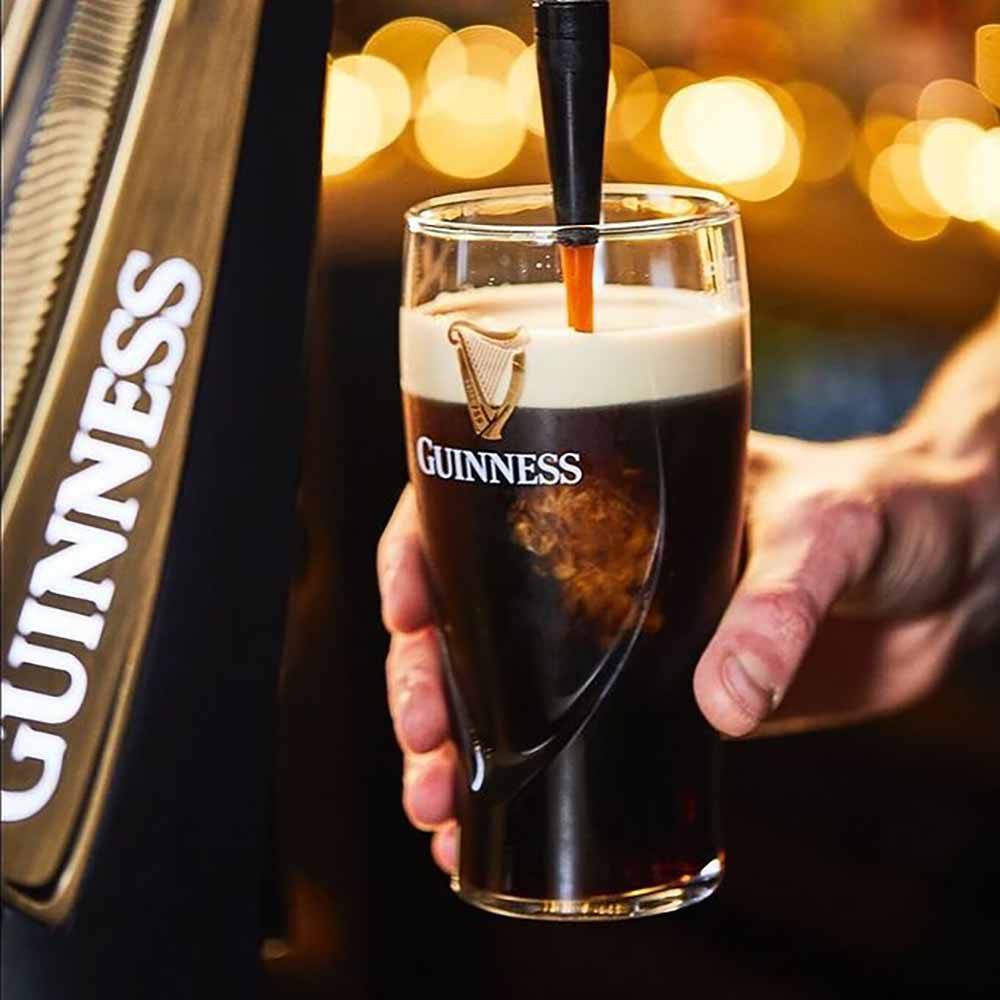
Photography courtesy of Guinness
His name is Seán Mackin; he’s the Regional Quality Executive for Diageo. (Editor’s Note: In 1997, Guinness and Grand Metropolitan merged to form Diageo.)
Wagner had the chance to make the rounds with Mackin to some pubs in Dublin. “Over there this is suit-and-tie stuff,” says Wagner. “Seán walks in and everybody behind the bar straightens up because Mr. Mackin is here.”
Wagner recalls Mackin’s system for describing the pints they tried. “There were three phrases: a good pint, a great pint, and a brilliant pint,” says Wagner.
At one point, Wagner walked out of a pub that had a lot of challenges, where Mackin had to fix the pressure, change the temperature, and more. “As we walked out, I said, ‘Seán, tell me, man, what kind of pint was that?’” says Wagner. “He said, ‘It’s a good pint.’ I was like how can that be a good pint?… He said, ‘It was still a pint of Guinness.’”
At the end of the day, whether you’re in Dublin, Baltimore, or even Boston, it’s still a pint of Guinness.
One that’s magical and beloved.
It’s a pint full of history.
But for true Guinness fans like Hayden, the love for Guinness goes beyond just drinking pints.
Guinness Fans Don’t Just Drink Beer
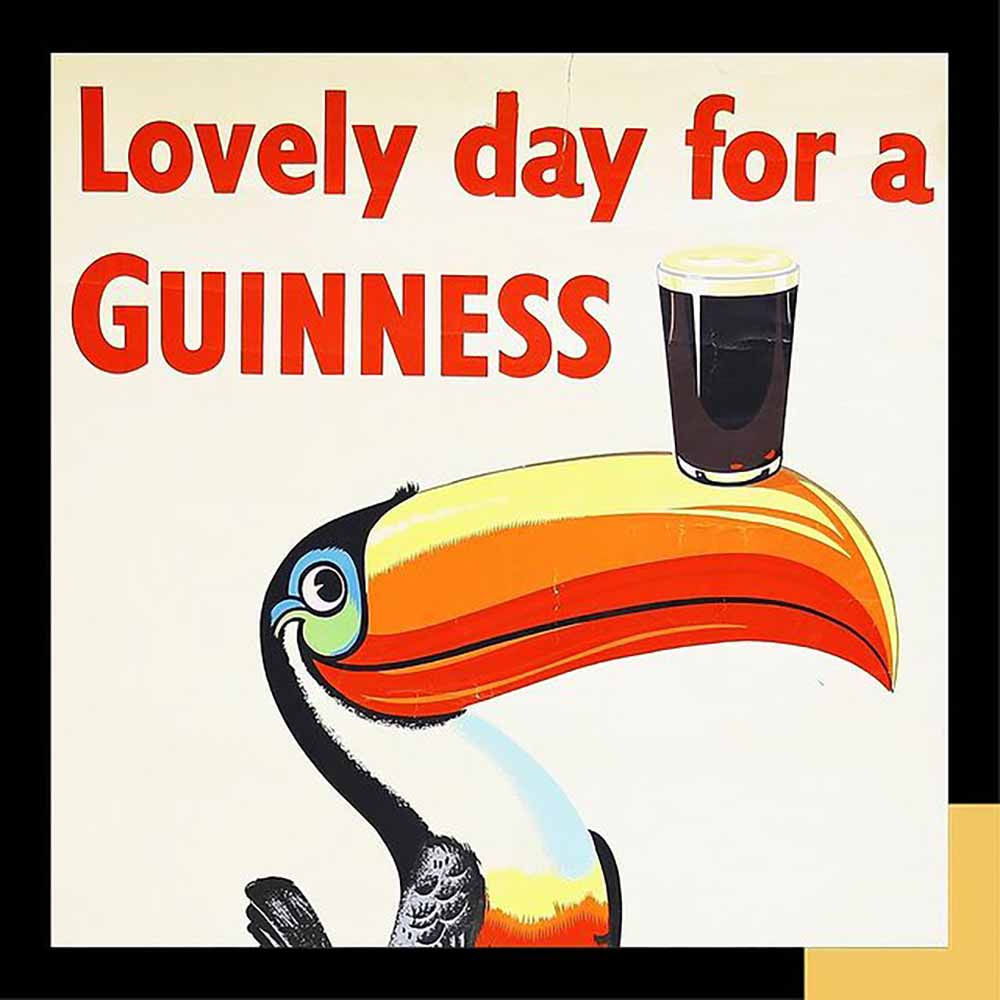
Photography courtesy of Guinness
“People don’t realize that it’s not always about the beer,” says Hayden. “Guinness has so much history behind them that a big part of us want to collect so we can become a part of that history.”
For instance, many people track down vintage Guinness ads. In 1929, John Gilroy, an English artist and illustrator, drew the Guinness zoo animals campaign that has become one of the most lasting and iconic advertising campaigns. His prints are still popular with collectors today.
For Hayden he had a different advertising campaign and piece of memorabilia in mind. For Guinness’ bicentennial anniversary in 1959, the brewery took a bunch of empty Guinness bottles, placed a note inside from Neptune, the god of the sea, and tossed them into the Atlantic Ocean.
According to Hayden, those bottles are still turning up on beaches to this day. “It’s like the longest advertising campaign,” says Hayden. “I always wanted a complete one that wasn’t opened.” He finally got one. “It’s something I cherish,” says Hayden, who has yet to open the bottle and says he never will.
Now Hayden has a piece of history.
World history…and Irish history, of course.
Pull on Our ‘Harp’ Strings: How Guinness Trademarked the Harp
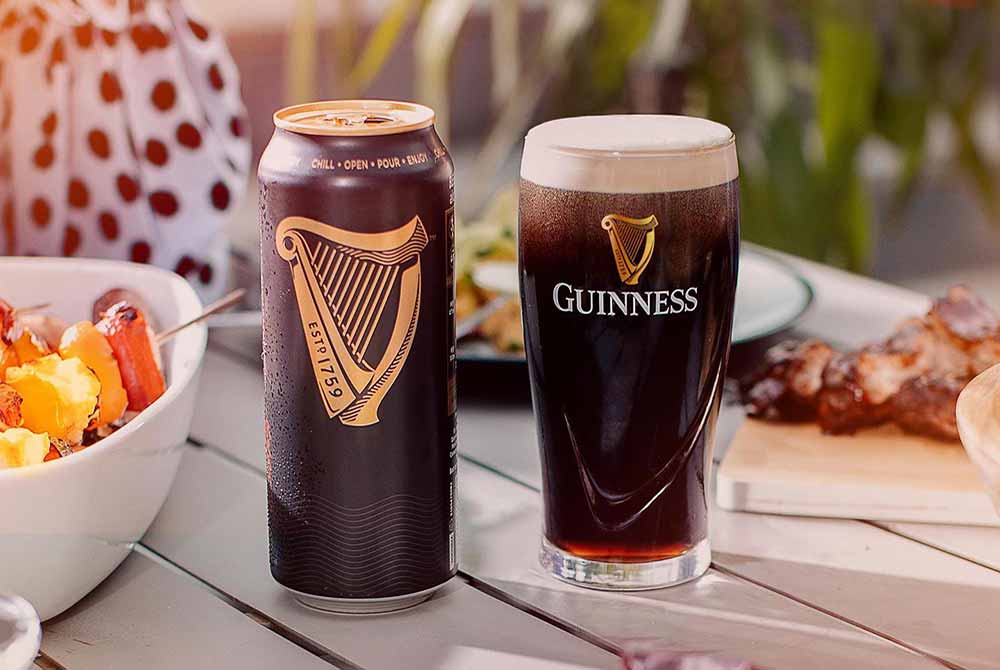
Photography courtesy of Guinness
Guinness is synonymous with the country of Ireland, which is synonymous with the harp.
Why? It goes all the way back to the myth of Brian Boru. A warrior and King of Ireland, Boru would bring a harp into battle, playing his musical instrument to lull his enemies to sleep.
“No one has been clear with me whether that means he was a good harp player or a bad harp player,” jokes Wagner.
As Guinness grew and became tied to Ireland, the brewery wanted to incorporate the harp into its branding. In 1862, the first year trademarks existed, the brewery put its legal stamp on the harp.
At the time, Ireland was still a part of the British Empire. When the country gained independence and established the first republic government in 1922, there was a push to use the Irish harp as the country’s symbol.
“We tell the story of the harp with our tongue planted firmly in cheek,” says Wagner, because when the country of Ireland approached Guinness about using the symbol, they said, “Nah brah, you have to get your own,” says Wagner.
Which is why today, if you look at the official harp of Ireland, it’s essentially the same as the Guinness harp…but flipped.
As you’re looking at the icon, if the bow is on the right side, that’s Guinness.
If the bow is on the left side, it is the Irish harp.
“But we all know what is the official harp of Ireland,” says Wagner.
It’s just little tidbits like this that make the mystique of Guinness that much more alluring.
Let’s Set the Record Straight on The Guinness Book of Records
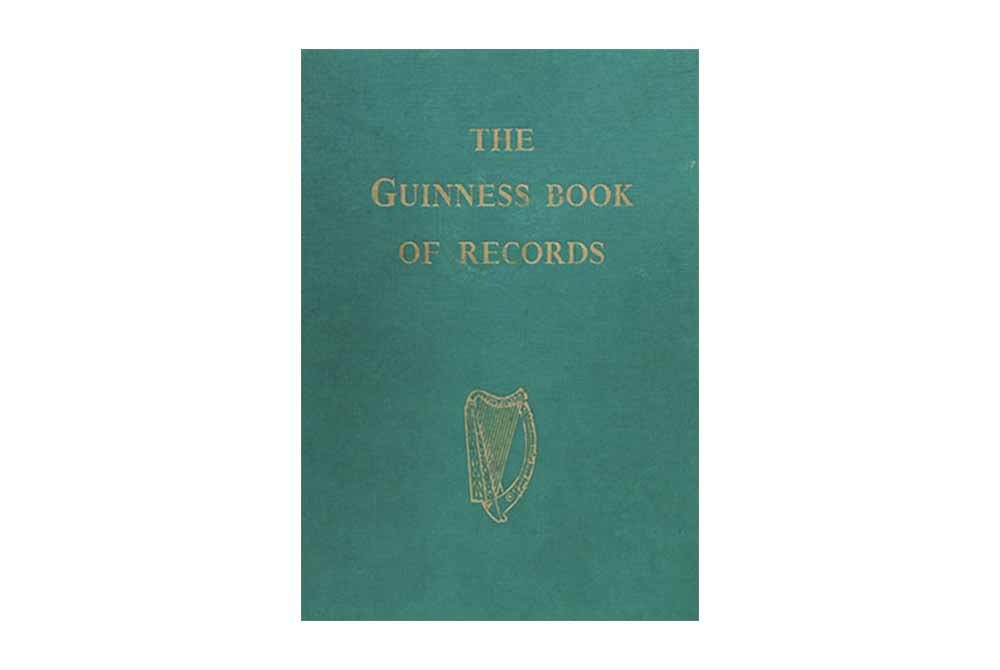
Photography courtesy of Guinness
Another fun fact in the brewery’s history: Most people don’t know that The Guinness Book of World Records started with Guinness (and is so aptly named. Although, the original was just known as The Guinness Book of Records).
As the tale goes, Sir Hugh Beaver, Managing Director of the Guinness brewery at the time, went out on a hunting trip with his buddies. While out shooting animals, he got into an argument with his friends about the fastest game bird. Without reaching a conclusion, Sir Beaver returned to the brewery, grabbed a few interns, and told them to figure it out along with a bunch of other facts and figures.
“He wanted to put it in a book and send it to pubs to settle bar arguments,” says Wagner. “That’s how the highest selling trademarked book in history was created.”
A Remarkable Brewery Making a Remarkable Beer
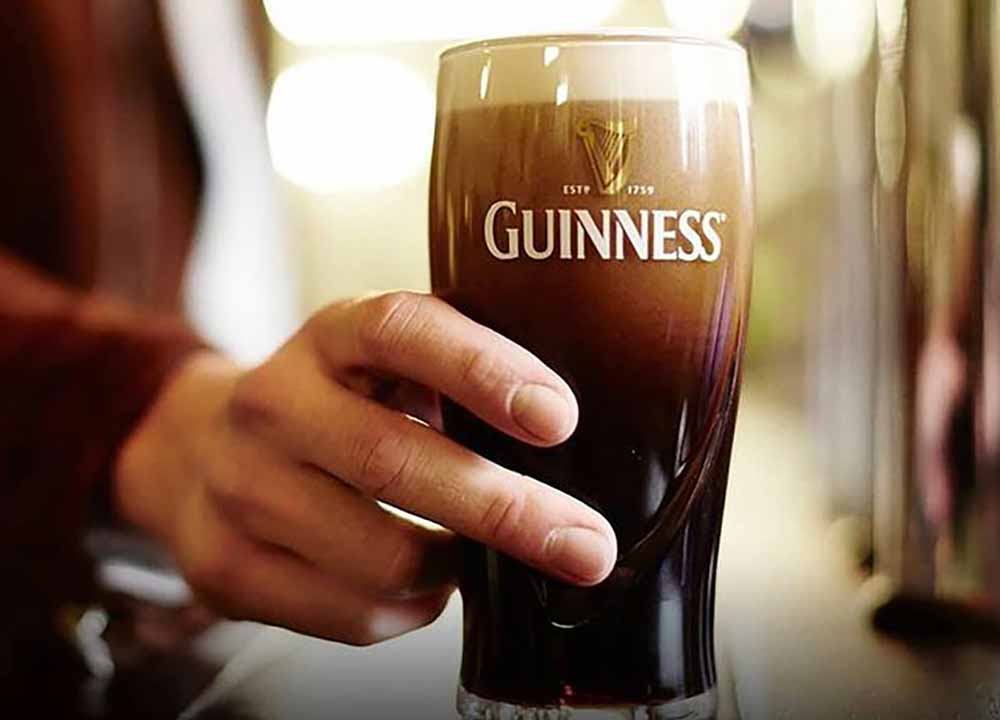
Photography courtesy of Guinness
With a robust lineage and so many rich stories, it’s easy to see why this cherished beer has left its own trademark on history, cultivating a cult-like following over the years.
Perhaps Wagner puts it most eloquently, “We have more stories than we know what to do with.”
And with new fans coming on board everyday, they’ll probably have even more tales to add to the archives.
But two things we know for sure:
People will still call up the brewery everyday to complain about something left in their beer.
And Guinness will continue to hold a special place in beer drinkers’ hearts (and mouths) across the globe.

